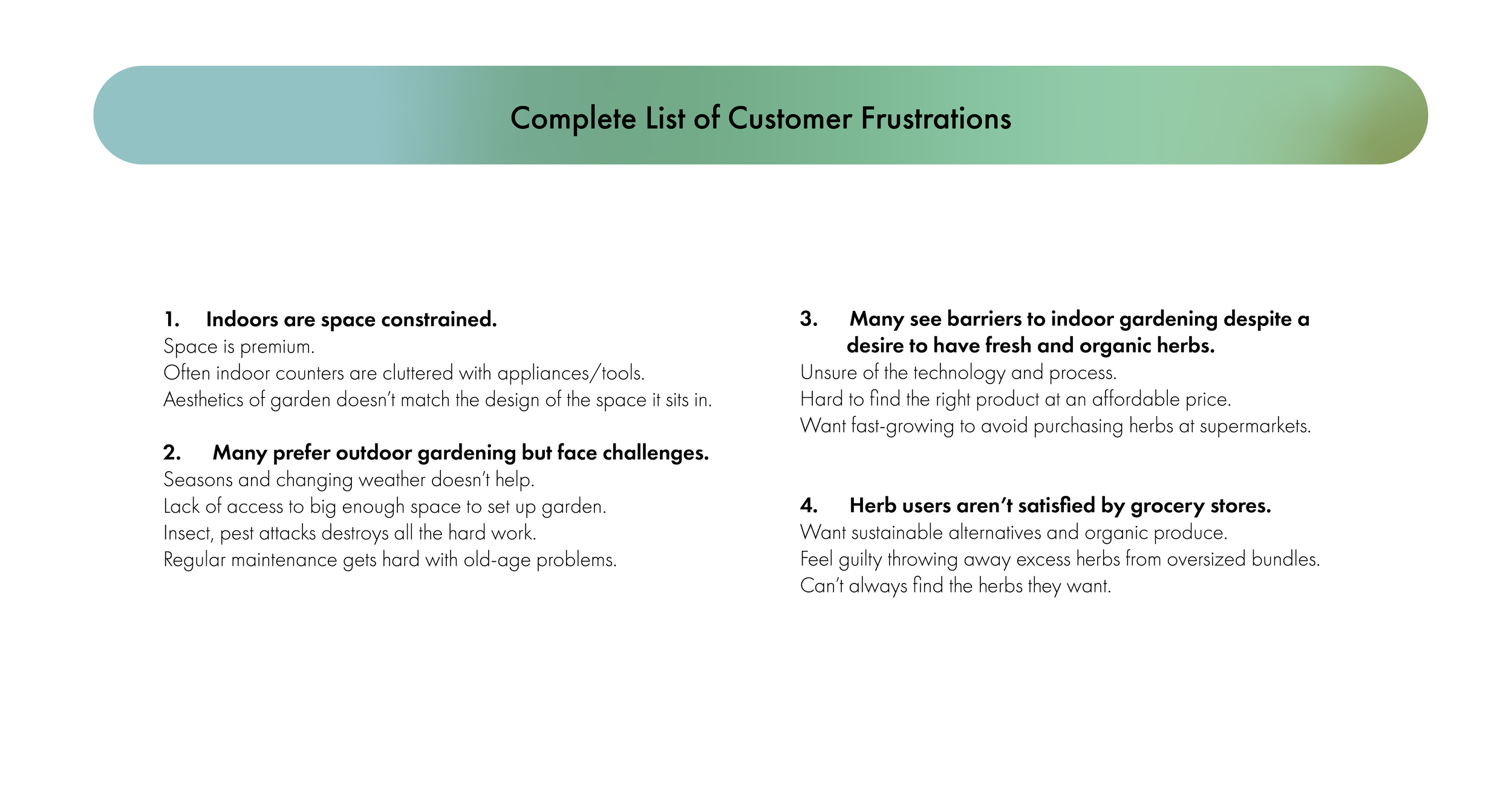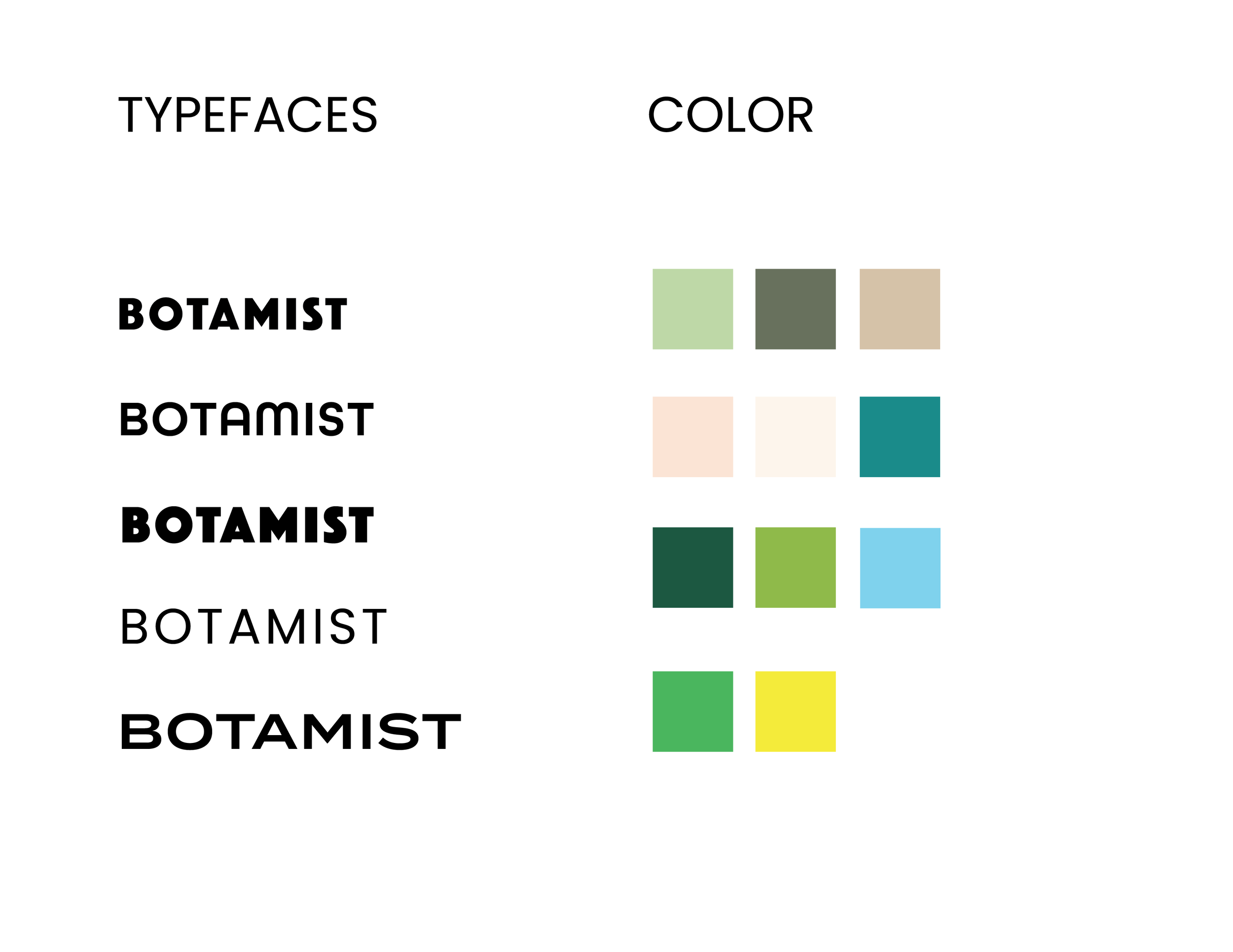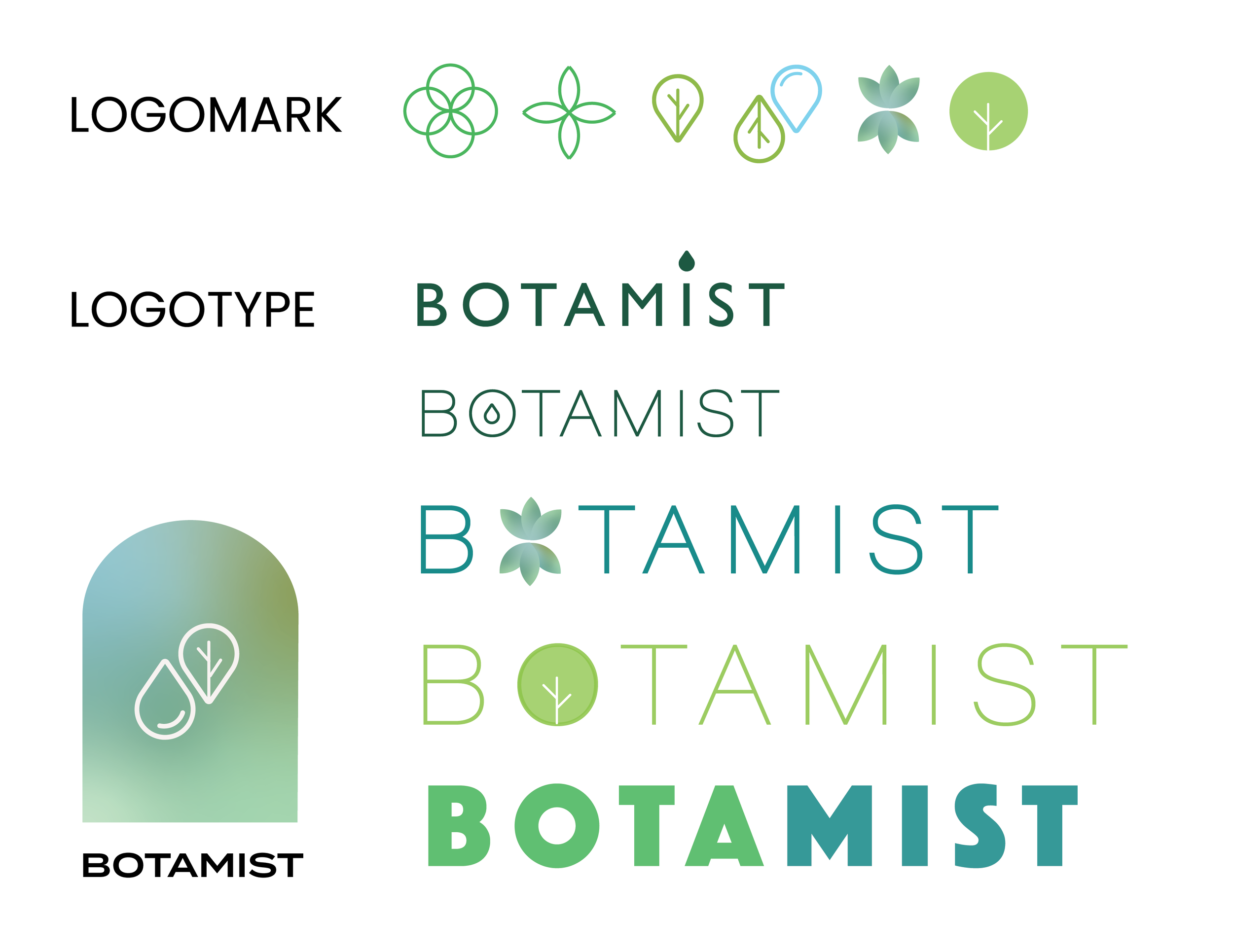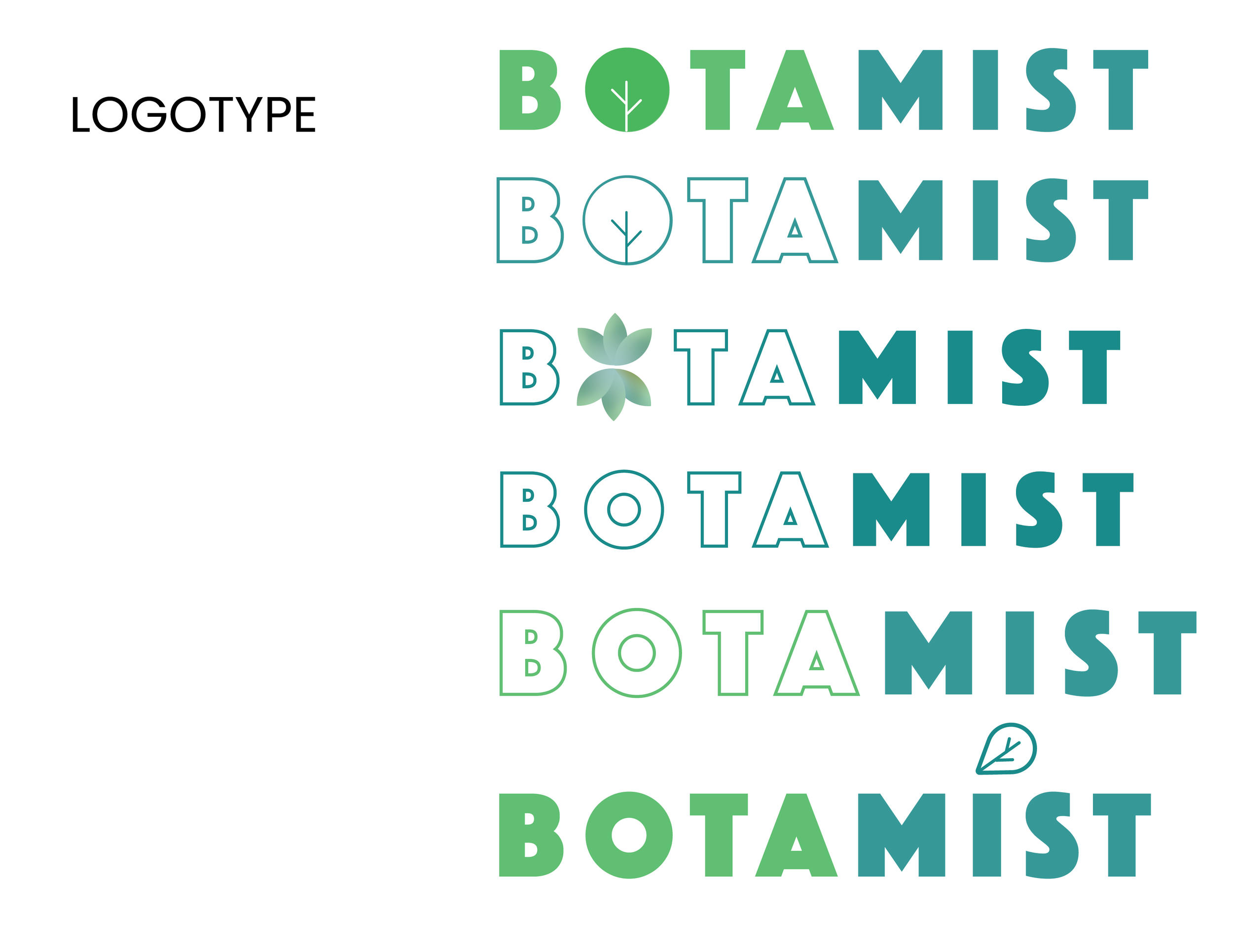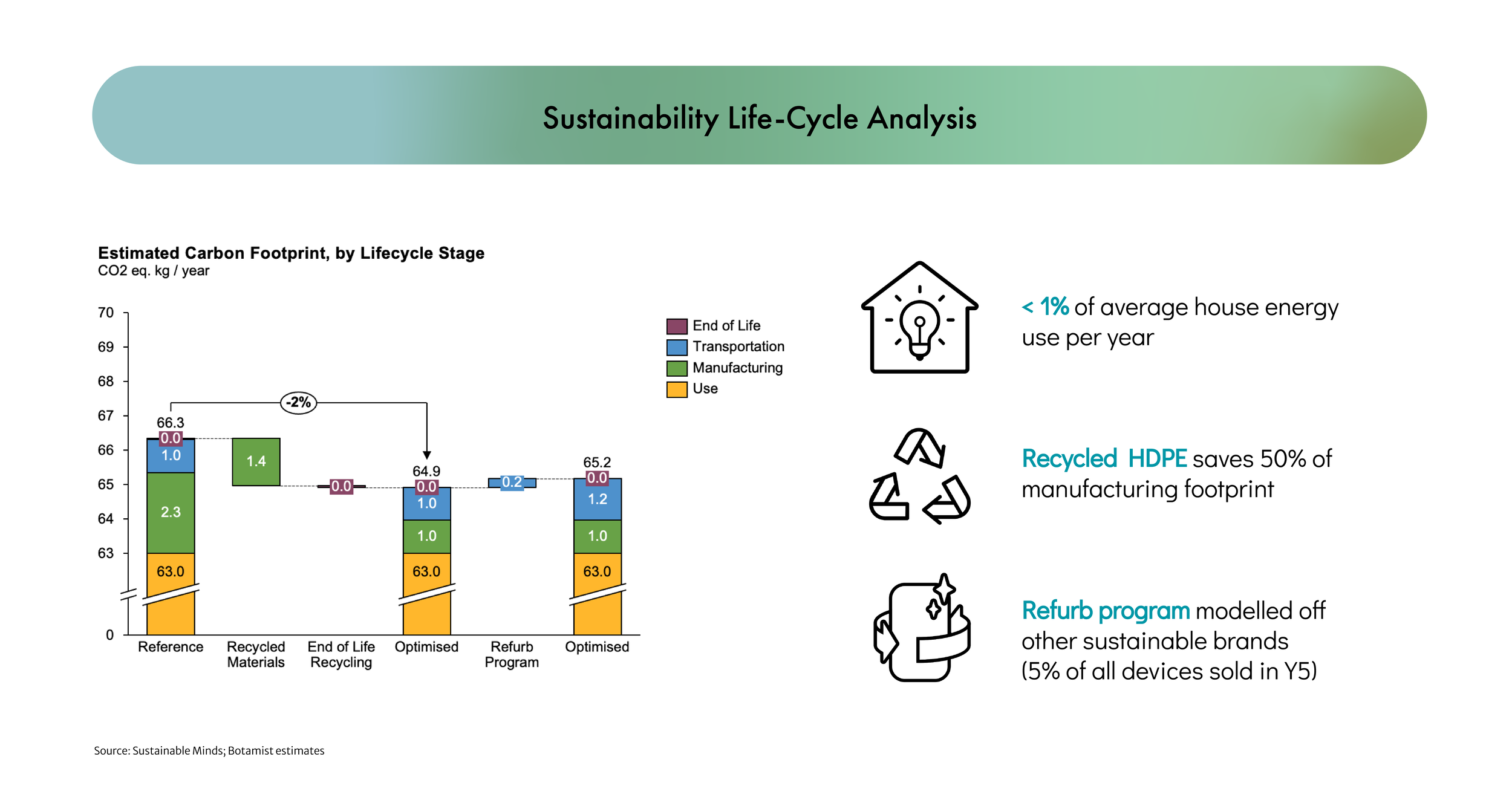
BOTAMIST
Team
Taylor Hamilton, Dan Reilly, Joyce Tam, Jonathan Wong, Andrew, Jiayue Zhao, and Kaanchi Chopra (RISD + MIT Studio)
Role
Research, Concept Development, Visual Design, CAD Modeling, Video Production
Tools
Rhino, Keyshot, Adobe Illustrator, Photoshop, Premiere Pro
Duration
8 weeks
Challenge
Everything tastes better with fresh herbs. However, herbs from the supermarket often lead to disappointment. For example: fresh herbs are sometimes not in stock or easily found, herbs are expensive, the excess herbs get wasted once opened, and the process is messy. How do we remove the barriers to entry of gardening for herb lovers and growers?
Solution
With the mission to empower your inner gardener, we created a self-lighting and self-watering system for herb cultivation in small indoor spaces. Botamist provides full spectrum lighting which supports the growth of upto 6 different herbs simultaneously using an optimised aeroponics misting system. By keeping sustainability, affordability and aesthetics at the core, Botamist adds flavor to meals year-round.

PROCESS
We used design thinking and systematic innovation processes to develop our final product. By using a collection of Agile ideas in each sprint, we were able to explore, create and implement our solutions.
EMPATHIZE - Conduct research to better understand target users.
CUSTOMER ANALYSIS
We interviewed 16 herbs consumers whose experiences range from buying fresh herbs at stores to having extensive experiences in both indoor and outdoor gardening. Developed below are two personas of our primary and secondary customers.
After developing customer personas, we settled on ‘Trader Joe’s Chefs’ as our target customers which refers to single or dual income with no kid professionals who are time-constrained, environmentally conscious, and prefer to eat high-quality, organic food. They are interested in growing herbs for cooking, are seeking a high-fulfilment and low-investment activity, who are currently facing barriers to gardening.
A complete list of customer needs is developed based on user’s pain points.
DEFINE - Observe user needs to define problem statement.
How do we remove the barriers to entry of gardening for herb lovers and growers? Especially, professionals who are time-constrained, environmentally conscious, and prefer to eat high-quality, organic food.
MARKET ANALYSIS
We looked at some existing products.
Indoor herb gardens are poised for growth as a result of market drivers like decreasing global supply of arable land, increasing demand for production of highly nutritious food, and increasing need for maximising crop yields.
In this relatively young market, the currently available products in the Competitive Analysis chart on the right do not meet all the needs we’ve identified in our Customer Needs Analysis before.
Two key dimensions that indoor herb growing products can be clustered on: small vs. large form factors and portable vs. fixed installation (see map below). Based on research, we identified a gap in the fast growing smart garden market in the small/portable quadrant.
While existing products in the market utilise Hydroponics, we chose to use an Aeroponics system for our in-home herb garden for the following reasons:
IDEATE - Highlight opportunities for innovation and generate concepts.
CONCEPT GENERATION
We started with 18 initial designs that satisfied some or all of the various customer needs. Two rounds of voting and redesign where the best parts of the previous designs were leveraged, ended with two distinct design concepts.
CONCEPT SELECTION
Based on Customer Feedback, we chose the Nuclear Core Design and moved from lo-fi prototypes to hi-fidelity models for more customer testing.
PROTOTYPE - Select, build and test product concepts.
After feedback on lo-fi cardboard prototypes of Nuclear Core, we built another model using PVC pipe, bucket base, wood panel, and ring light.
TEST - Conduct qualitative and quantitative testing.
We conducted qualitative customer testing with 7 target customers, and iterated further based on their feedback.
Based on customer feedback, the central form changed from a cylinder to a more geometric one. Some of the feedback from the mockup stated that the cylinder form reminded customers of trash cans. Customers also wanted a wider top and base so it could be usable as a side table. In order for customers to better understand how this product will look and interact, CAD renders using Solidworks and Keyshot were developed to get more accurate feedback for the final aesthetics of the unit.
Quantitative Customer Survey Results
N = 33
Target customer N=14
Do you shop at Trader Joe's on a regular basis? = YES
Do you spend some of your weekly shopping budget on herbs? = YES or SOMETIMES
Do you consider yourself educated on sustainability issues? = SUPER PASSIONATE or ALIGNED
Sequential monadic - respondents shown random 5 out of 10 concepts
Below is a heat map showing the highest performing designs across the questions. The green areas indicate high performance while the red is low.
REFLECT - Document final solution and iterate based on user feedback.
After many iterations of product development and user testing, we settled on our final design. The exploded view of Botamist highlights the key elements.


BRANDING
We changed the name from ‘Nuclear Core’ to Botamist. (sensors = bot, aeroponics = mist), and experimented with different logomarks and logotypes to develop Botamist’s identity.
Botamist comes with an info-manual to explain setup procedure, operation and maintenance with recommendations of herbs that can be grown.
LIFECYCLE ANALYSIS
We used the Sustainable Minds System BOM software to understand our product’s impact on the environment. We assumed a useful life of 3 years. Analysis showed that in our reference model, power consumption (use) for the misting and lighting subsystems dominated the carbon footprint. For manufacturing, we shifted from the material used in our reference prototype, ABS, to recycled HDPE bottles, which has a much lower carbon footprint, saving over 50%. At the quantities we are aiming to sell, injection molding is still the preferred option over additive manufacturing. We include an additional case of a return and refurb program (in the same vein as Patagonia’s Worn Wear) which adds slightly to the overall carbon footprint through transportation, but enables a new revenue stream and also brand affinity with customers.
REAL, WIN, WORTH IT
Botamist addresses real customer needs (desirable), as proven wins at the implementation (technically feasible), and with a Retail Price of $125 is absolutely worth the investment (viable).

NEXT STEPS
After receiving more feedback, some observations and next steps are:
I realised the hardest part for customers would be the shift from growing in traditional soil to growing herbs using aeroponics.
Make maintenance and clean-up of the unit more easy and accessible to our users.
A user-friendly phone app that records the dates when pods were planted, gives an update on the level of water in the reservoir, manage LED’s brightness level, provides tips on different herbs to grow etc.







